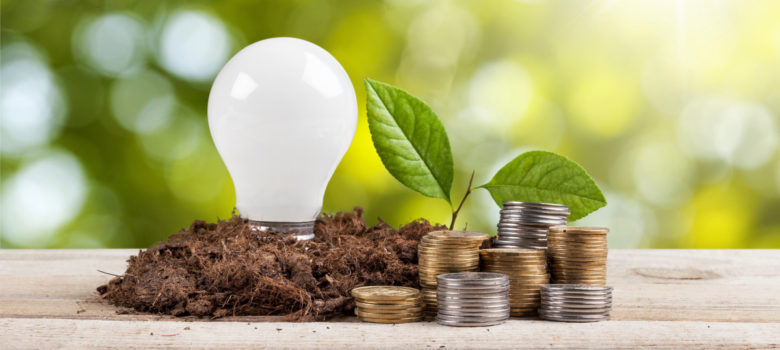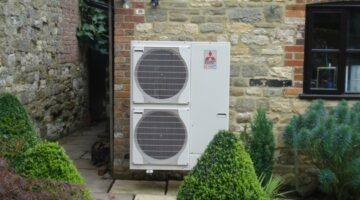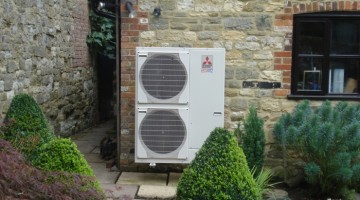
What is the Renewable Heat Incentive?
The Renewable Heat Incentive (RHI) is a government scheme that provides payments for the generation of heat from several different renewable energy sources. It was introduced in November 2011 to replace the Low Carbon Building Programme in encouraging more people to invest in renewable forms of heating. The Renewable Heat Incentive has distinct schemes for commercial and domestic projects. You can find our breakdown of the Commerical Renewable Heat Incentive here.
For the Domestic RHI, payments are calculated by the heat generation of the installation and made quarterly over a 7 years period. The rates vary slightly depending on the number of people claiming, which is a monthly adjustment known as digression. For the current rates, check our RHI technology page here.
The Renewable Heat Incentive is set to run until the 31st of March 2021.
Technologies Available on the Renewable Heat Incentive
Biomass boilers
Biomass boilers use essentially the same as the gas boilers that you’d find in 80% of UK homes, except that fuel source is provided by small, sustainably sourced wood pellets.
Air-to-water Heat Pumps
Air source heat pumps use the ambient heat found in the air outside your house and compress it using electricity. This compression causes the extracted warmth to heat up further and then be released into your home. Only air-to-water heat pumps are eligible for the RHI.
Ground source heat pumps
Similar to air source heat pumps, but a ground source heat pump pulls the heat from the ground, making it a whole lot more efficient. Ground source heat pumps require extensive pipework and a lot of open land, however once installed they are one of our favourite ways to heat your home.
Water source heat pumps
Though you don’t see it written about all the often, water source heat pumps are indeed part of the RHI scheme. In all the paperwork they fall under the umbrella of a ground source heat pump, but this is very poorly explained so it’s often missed.
Solar Thermal
Also known as solar heating, solar thermal harnesses the energy provided by the sun to provide thermal energy to heat water. Only flat plate and evacuated tube solar panel systems are eligible.
For the commercial Renewable Heat Incentive, slightly different technologies are covered. Details of the eligible systems for both the commercial and domestic RHI can be found here.
Problems with the Renewable Heat Incentive
The RHI was initially introduced in the Energy Act 2008, but it took until the spring of 2014 to be implemented. The 6 years that it took for the project to come to fruition caused a lot of people a lot of problems.

Here at the GreenAge, we think it’s a hugely flawed system. Although you will make back a large proportion (or even more) of your original outlay, the RHI system means that you need to have a significant amount of disposable income to begin with; ground source heat pumps cost upwards of £25,000. Even though this money will be recouped over the payback of the 7 years, it limits the people able to get one to those that have thousands of pounds lying around. These are then the people that benefit from the lowered heating costs and Renewable Heat Incentive quarterly payments. The RHI is, therefore, a scheme designed only to encourage renewable adoption and cheaper heating for the wealthy, with very little accessibility for lower-income families. This is a pervasive problem within UK renewable subsidies and one that we are really not fans of.
Should I apply for the Renewable Heat Incentive
If you’re getting any of the eligible technologies installed on your property then yes you should absolutely apply for the RHI. The quarterly payments will go a long way to helping you recoup the initial expenditure of getting the tech installed.
To find a trusted local installer of RHI eligible tech in your area, fill out our contact form here and we’ll be in touch.
Think we missed something? Do you have a different opinion?
Comment below to get your voice heard…












One serious omission is no help with external wall insulation very beneficial for solid wall constructed houses though far too costly for most people. I have horizontal batten airgap/bubble foil, vertical batten airgap foil back plasterboard insulated my victorian property inside has made a considerable difference.
Hi Tony,
I completely agree that there needs to be more government funding for external wall insulation.
That said, EWI would be a lot more likely to fall under the ECO (Energy Company Obligation) scheme, which is all to do with improving the energy efficiency of UK housing stock. The RHI is about creating heat generation systems, as opposed to keeping it in once you’ve got it.
Many thanks,
Harri
My wife and I have recently purchased a property in South Wales and are thinking of installing solar panels on our roof but can’t decide if we should apply for this incentive or the Feed In Tariff. Which will save us more money? Are there any restrictions? Can we apply for both?
Hi Morgan,
Unfortunately the Feed-in Tariff is now over, and the RHI doesn’t cover solar PV. You could still look in to getting solar thermal with RHI funding though.
Thanks,
Harri
Will the RHI be renewed in 2021? If not, if I installed an air heat pump now, would I only get 2 years of payments?
Thanks in advance for the explanation!
Hi Kate,
It’s unclear yet whether they’ll extend the RHI. However if you were to get a heat pump installed anytime before the end of the scheme, the 7 year contract would still run its course and you’d have all the payments.
Many thanks,
Harri